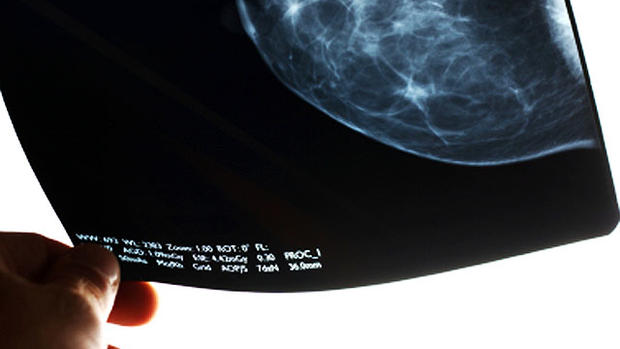Current breast cancer screening guidelines may lead to more missed cases
The mammogram screening guidelines set forth by the U.S. Preventive Services Task Force (USPSTF), one of the top advisory panels on health issues to the government, may lead to more missed cancers and a decline in screening, new studies have concluded.
Two new studies that looked at the effectiveness of the guidelines were presented on Nov. 27 at the Radiological Society of North America (RSNA) annual meeting in Chicago
About one out of eight women in the United States will get invasive breast cancer during their lifetime, according to the American Cancer Society. In 2012, there will be about 226,870 new cases of invasive breast cancer and about 63,000 cases of new cases of carcinoma in situ (CIS), the earliest state of breast cancer. In total, 39,510 women are expected to die in 2012 from the disease.
"Recommendations on screening mammography are extremely important public policy and we wanted to contribute to that dialogue," author Dr. Elizabeth Arleo, assistant professor of radiology at New York - Presbyterian Hospital -- Weill Cornell Medical College in New York City, said in a press release. "We get questions all day long from patients and referring physicians on the appropriateness of screening mammography. The inconsistent information is very confusing for everyone."
The Task Force previously recommended routine mammography screenings for women over 40, something the American Cancer Society still recommends. However, in 2009, the USPSTF revised its guidelines to say that routine screenings with mammography should only occur every two years for women 50 to 74. The Task Force said at the time that the decision to start regular mammograms before age 50 should be an individual one, taking into account a patient's values regarding specific benefits and harms.
Arleo and her team looked at data about routine mammogram screenings collected between 2007 and 2010 from patients at New York - Presbyterian Hospital-Weill Cornell Medical College. A total of 43,351 screening exams were performed, and 205 breast cancers were found.
Women between the ages of 40 to 49 accounted for 14,528 or 33.5 percent of the screenings. Nineteen percent of the cancers found by researchers were in women in their 40s and over 50 percent of their cancers were invasive kinds that had spread through the breast tissue. Only three of the women had a first-degree relative with pre-menopausal cancer.
"It seems unacceptable to potentially miss nearly 20 percent of the breast cancers we are identifying," Arleo said. "This, in our view, would represent a substantial degree of under-diagnosis."
- Mammograms may save one life for every three women overdiagnosed
- Mammograms lead to breast cancer "overdiagnosis" in 1 million women, study finds
- Black women with breast cancer more likely to die within 3 years of diagnosis
In the second study, researchers looked at Medicare data collected from 2005 to 2010 to find the annual rates that beneficiaries were getting mammograms. When the USPSTF guidelines were implemented, screenings went down 4.3 percent, compared to 2006 through 2009 where they grew 0.9 percent annually.
"There was considerable controversy over the task force guidelines, but it was unclear how much they would influence women's choices about screening," Dr. David C. Levin, professor and chairman emeritus of the Department of Radiology at Thomas Jefferson University Hospital in Philadelphia, said in a press release. "We're not able to tell from the data whether this significant drop in utilization was a result of women deciding to wait another year to have their mammogram, or women over the age of 74 not having the exam. But, clearly, the new USPSTF guidelines have had an effect."
In either case, Levin said the numbers of screening were low, and having even less people come in to get checked was alarming.
"We'll never see 1,000 out of 1,000 women getting a screening mammogram, but you'd like to see that number closer to 1,000, and certainly higher than 322," he said. "We need to continue to follow these numbers and to watch the breast cancer mortality statistics."
Dr. Therese Bevers, a professor of clinical cancer prevention at the University of Texas M.D. Anderson Cancer Center in Houston, told HealthDay that despite the negatives that overuse of mammogram screening can bring -- which include unnecessary, harmful treatments -- more screening is still necessary.
"I think this reinforces concerns a lot of us have had since the [USPSTF] guidelines came out," she said.


